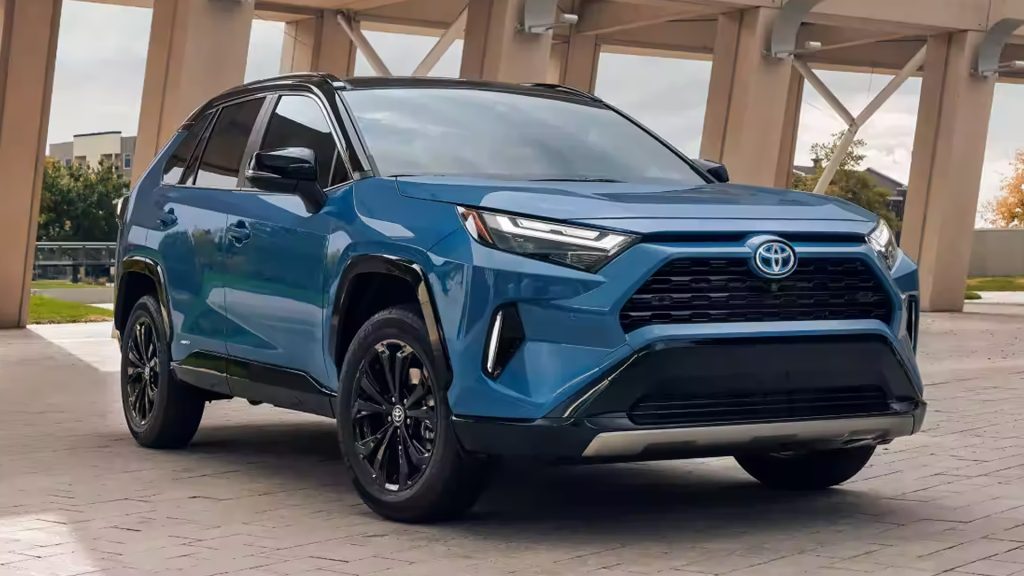
How the Toyota RAV4 AWD Performs in Snow and Winter Conditions

Driving in snow, ice, or winter weather presents unique challenges for any vehicle. In this article, we explore how the Toyota RAV4 with all-wheel drive (AWD) performs under such conditions, focusing on real-world experiences, technical data, and practical recommendations.
Advantages of the RAV4 in Winter Conditions
Excellent Visibility Design
Good visibility is essential when driving in snowy conditions. The RAV4’s large mirrors, well-placed windows, and rearview camera provide solid visibility even during storms. However, the rear camera can easily get dirty from snow or slush, so it’s wise to keep a microfiber cloth handy for quick cleaning.
Balanced Weight and Ground Clearance
The RAV4 strikes a good balance between weight and ground clearance. In slushy snow, a vehicle that’s too light struggles to gain traction, while one that’s too heavy may slide on ice. The RAV4’s moderate weight helps maintain control without becoming a liability during braking on frozen roads.
Active Control Systems
Like most modern vehicles, the RAV4 includes essential safety systems such as ABS (anti-lock braking system) and traction control. These systems are vital for preventing skids and loss of control on slippery surfaces.
Hybrid RAV4 models use an electronic on-demand AWD system that automatically distributes power between the front and rear axles depending on traction. In certain situations, up to 80% of the torque can be sent to the rear wheels when slip is detected.
Real-World Experience: Driving to Leavenworth, Washington
Road Conditions Encountered
During a trip to Leavenworth, drivers faced compact snow, patches of ice, and wet snow between lanes. Such conditions required careful steering, anticipation, and precise control—areas where the RAV4 performed well thanks to its stability and driver assistance systems.
You may be interested in reading What to Expect When Driving a Fiat 500: Owner's Perspective
What to Expect When Driving a Fiat 500: Owner's PerspectiveUseful Winter Equipment
Comfort-oriented features became essential during the journey: heated seats, a heated steering wheel, and all-weather floor mats that resisted snow, mud, and moisture.
Before setting off, it’s crucial to check windshield wipers, fluid levels (coolant and washer fluid), and pack emergency gear like blankets, water, food, and a flashlight.
Tires and Traction Performance
All-Season vs. Winter Tires
The vehicle tested used Michelin CrossClimate 2 all-season tires, which provided solid traction and quiet performance in moderate snow. However, experts agree that dedicated winter tires significantly enhance grip and braking once temperatures drop below freezing.
Owners on RAV4 forums report that winter tires such as the Michelin X-Ice or Bridgestone Blizzak greatly improve handling in deep snow and sharp turns.
Tire Pressure and Maintenance
Cold air reduces tire pressure, so maintaining proper inflation is vital. Some drivers lower pressure slightly (within safe limits) to increase surface contact, but always follow manufacturer specifications and regularly inspect tire wear.
The Driver’s Role: Technique and Caution
Adapting Driving Technique
Even with advanced systems, driver behavior determines real-world performance. Key practices include:
You may be interested in reading What to Expect When Driving a Fiat 500: Owner's Perspective
What to Expect When Driving a Fiat 500: Owner's Perspective Comparing the Fiat 500e to the Traditional Fiat 500: Pros and Cons
Comparing the Fiat 500e to the Traditional Fiat 500: Pros and Cons- Increasing the following distance between vehicles
- Braking gradually to prevent locking
- Accelerating gently to avoid wheel spin
- Taking turns slowly
- Practicing in safe areas to understand vehicle response
Performing small test accelerations or braking maneuvers in a controlled area helps you feel how the RAV4 reacts on snow.
Snow Mode and Traction Settings
Many RAV4 models feature a dedicated “Snow” mode that adjusts throttle response, gear shifts, and traction control to minimize wheel slip. It’s best used in light to moderate snow.
In hybrid variants, the on-demand AWD automatically engages when traction is lost, offering smooth transitions between dry and slippery surfaces.
Strengths and Limitations in Winter
Key Advantages
- Capable AWD system: Dynamically distributes power between axles for optimal grip.
- Generous ground clearance: Helps the vehicle glide over moderate snow without scraping the undercarriage.
- Advanced safety assists: Includes ABS, stability control, hill assist, and traction management.
- Comfort features for cold climates: Heated seats and steering wheel enhance winter driving comfort.
Limitations to Consider
- Deep snow may still challenge the RAV4; larger SUVs with low-range 4WD have an advantage.
- On icy surfaces, braking remains risky despite electronic aids.
- Without winter tires, AWD benefits are reduced.
- Drivers should avoid overconfidence—defensive driving remains essential.
Comparisons with Other SUVs
In tests comparing the Subaru Forester Wilderness and the RAV4 TRD Off-Road, both vehicles performed competitively. With proper tires and traction modes enabled, the RAV4 held its own, showing Toyota’s refined AWD system and effective balance for winter use.
Conclusion and Key Recommendations
The Toyota RAV4 AWD is a dependable companion for snowy and icy conditions when properly equipped and driven wisely. Its balance of weight, ground clearance, electronic control systems, and interior comfort make it a strong performer during winter travel.
Practical Takeaways:
You may be interested in reading What to Expect When Driving a Fiat 500: Owner's Perspective
What to Expect When Driving a Fiat 500: Owner's Perspective Comparing the Fiat 500e to the Traditional Fiat 500: Pros and Cons
Comparing the Fiat 500e to the Traditional Fiat 500: Pros and Cons Understanding the Fiat 500's Infotainment System and Common Issues
Understanding the Fiat 500's Infotainment System and Common Issues- Choose AWD versions if you live in areas with harsh winters.
- Equip your vehicle with quality winter tires.
- Maintain correct tire pressure and inspect fluids before long trips.
- Use traction modes (Snow, 4WD) as needed.
- Drive defensively—gentle acceleration, smooth braking, and greater spacing between vehicles.
For drivers seeking a capable and comfortable winter SUV, the Toyota RAV4 AWD remains one of the most balanced and reliable choices available today.
If you want to know other articles similar to How the Toyota RAV4 AWD Performs in Snow and Winter Conditions you can visit the category Driving.
Deja una respuesta







More content of your interest